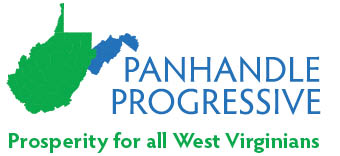West Virginia Desperately Needs A Higher Minimum Wage
Americans uniformly believe that workers deserve a basic standard of living free from employer exploitation. All states and the federal government have minimum wage laws. These laws do more than prevent exploitation. They also stimulate the economy, reduce poverty and inequality, and contribute to solving social and health problems.
Unfortunately, the West Virginia legislature seems uninterested in the benefits of advancing our minimum wage and cold to the life difficulties of minimum wage workers. West Virginia’s minimum wage has been stuck at $8.75 per hour since 2016.
The purchasing power of $8.75 in 2016 has eroded almost 35% since then. That means that today’s minimum wage worker has actually taken a huge pay cut versus the same minimum wage worker in 2016. To provide the same purchasing power now, West Virginia’s minimum wage would have to rise to $11.78.
Two other ways show how shameful the problem has become. If today’s minimum wage worker works a full schedule of 2080 hours – without unpaid time off – she would earn only $18,200 before taxes. While this is above the federal poverty level of $15,560 for a single person with no children, the income necessary to escape poverty with one child is $21,150. Both our minimum-wage worker and her child are consigned to poverty simply because the legislature won’t act.
A better way to evaluate West Virginia’s minimum wage is to compare it to the “living wage,” a concept developed at MIT in 2003. The living wage is what a full-time worker requires to cover the costs of her family’s basic needs in the place where they live. It includes the specific local costs for food, childcare, health care, housing, transportation, clothing, personal care items, broadband, and taxes. The 2025 living wage before taxes for one adult in West Virginia without children is $40,415. With one child, the living wage rises to $68,660.
Raising the Minimum Wage Will Make Working More Attractive
The labor force participation rate is the percentage of people aged 16 and older who are employed or actively looking for work. West Virginia’s LFP rate is 54.3%, the absolute worst in the nation. It isn’t the availability of jobs in West Virginia that is the problem. It is their attractiveness. One obvious way to increase the value and attractiveness of work is to raise the minimum wage.
Low-wage workers are no different than the rest of us. Each one evaluates the economic choices in front of them. For example, is it better to stay home and take care of the kids or to get a job? A higher minimum wage tilts that calculation in favor of working.
Both Democrats and Republicans want to see more West Virginians working. But “poverty shaming” low-income people or threatening to remove public benefits unless they take bad jobs isn’t a sustainable policy. Attracting more people to work through raising the minimum wage and making work more dignified is the better approach by far.
Raising the Minimum Wage Will Help Save Children’s Lives
A higher income for low-wage workers leads directly to better health for expectant mothers and a higher survival rate for newborns. It also reduces the frustration and anger among low-wage workers that lead to child abuse and neglect.
Infant mortality in the United States is driven almost entirely by excess infant deaths among low-income mothers. In 2023, approximately 9.8% of live births in West Virginia were low birthweight babies, defined as those weighing less than 5.5 pounds. Low birthweight is a significant contributor to infant mortality.
If a child in a low-income family survives their first year of life, they are still at risk for abuse and neglect. Family income is strongly associated with risk for child maltreatment. A study from Indiana University reported a 9.6% decrease in reported child neglect cases for every $1 increase in the minimum wage.
Foster care is often where abused and neglected children end up, but West Virginia’s foster care system is in shambles. Increasing the minimum wage is a smart policy means of saving children and reducing the strain on our foster care system.
Raising the Minimum Wage Will Help Save Adult Lives
In 2020, sociologists Angus Deaton and Anne Case identified a troubling trend they called “deaths of despair.” These are deaths from suicide, drug overdose, and gun-related violence. They found that while wealthier people tend to be healthier and live longer, those with lower incomes often struggle with feelings of depression and hopelessness, leading to an earlier death.
Not only would increasing the minimum wage help people move out of poverty and rely less on government assistance, but it could also reduce these “deaths of despair.”
People under financial stress are more than 20 times more likely to attempt suicide. In 2022, West Virginia had a suicide rate of 18.3 per 100,000 people, which is 65% higher than the national average and has increased by nearly 23% over the last 20 years. In fact, suicide is the second leading cause of death for young people in the state.
A 2020 study found that for every $1 increase in the minimum wage, there was a 3.4% to 5.9% decrease in suicide rates among adults aged 18 to 64 who had a high school education or less. Raising West Virginia’s minimum wage can save lives.
Raising the Minimum Wage Will Benefit the Whole Economy
Raising the minimum wage not only benefits those workers whose wages were below the new minimum, it would also benefit many other workers in the economy. This is because employers want to avoid wage compression. If a minimum wage worker suddenly receives an increase because of a change in the law, workers above him in the employer’s pay scale are usually given an increase so they remain above. This ripples up the chain of compensation, even to salaried employees.
The overall economy directly benefits from an increase in the minimum wage because of the difference in the way low-wage employees spend additional income versus higher paid workers. More money in the pockets of low-income people results in more spending for necessities, rather than in saving. As a result, an increase in the minimum wage directly increases the amount of money circulating in the overall economy. This has a wealth-creating effect for everyone else.
Raising the Minimum Wage Will Save Taxpayers Money
Medicaid, food stamps and other forms of public assistance are funded with tax dollars. Increasing the minimum wage reduces dependence on all forms of public assistance, thereby lowering the general tax burden.
What’s more, raising the minimum wage is “revenue-neutral” for governments since the increase in wages is not paid for with tax money. In fact, an increase in the minimum wage creates more tax revenue for governments because it creates more taxable income and stimulates more taxable economic activity.
Not only is raising the minimum wage the right thing to do in the world’s wealthiest economy, but for all these reasons it is also a powerful economic and social policy.

